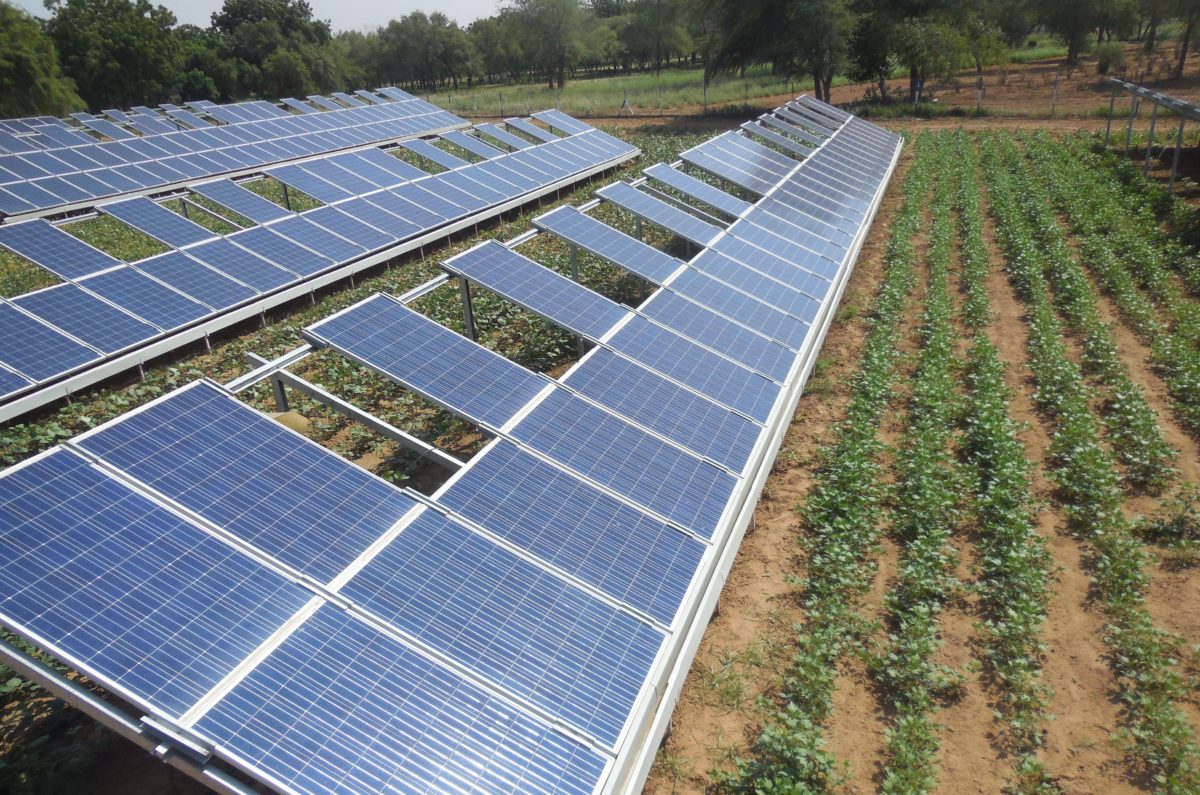A new paper by Canda-based International Institute for Sustainable Development (IISD) and the Consumer Unity and Trust Society International (CUTS) finds promising results in pilot agrivoltaics projects across India. It also identifies key areas of opportunity for agrivoltaics, justifying future research and investment.
The study was supported by the Deutsche Gesellschaft für Internationale Zusammenarbeit (GIZ) GmbH and funded by the German Federal Ministry for Economic Cooperation and Development (BMZ).
The study finds agrivoltaics did not negatively impact, and in some cases even increased, crop yields. The pilot implementers interviewed in the study suggested the technical feasibility of agrivoltaics with no change (or even an increase) in the yield of some crops like leafy vegetables, millet, and medicinal plants under shading conditions.
The study highlights the crop choices trialled in the pilot projects are still limited, and mainstream crops like paddy and wheat are yet to be tried successfully.
Agrivoltaics is still limited to a handful of pilots in India and is yet to reach a commercial scale.
The study suggests technological innovations and testing business models most viable in the Indian context as the key to the commercialization of agrivoltaics. It identifies three potential business models for deploying agrivoltaics: agrivoltaics jointly owned by farmer and developer; agrivoltaics solely owned by either the farmer or the developer; and developer as the primary promoter and farmer as a partner.
Bifacial panels and sun tracking were found to show promising results in agrivoltaics and can be encouraged through state-sponsored pilots.
The study finds arid and semi-arid regions and peri-urban areas likely to be favorable locations for agrivoltaics in India.
The study recommends state governments reform land-use and tax regulations to support agrivoltaics and highlights the need to develop consistent standards and definitions for agrivoltaics.
“States need to think beyond the uniform ceiling tariff regime if agrivoltaics is going to be commercialized at scale. A single ceiling tariff across a state negates the locational advantage of agrivoltaics in areas with high land rent,” states the study.
Among other suggestions, the study emphasizes capacity building to scale up agrivoltaics and continuous innovation and peer learning to overcome operational challenges.
This paper is based on the experiences of stakeholders (power distribution companies), agricultural universities, private solar PV developers, and farmers who have implemented agrivoltaics pilots across India.
This content is protected by copyright and may not be reused. If you want to cooperate with us and would like to reuse some of our content, please contact: editors@pv-magazine.com.









By submitting this form you agree to pv magazine using your data for the purposes of publishing your comment.
Your personal data will only be disclosed or otherwise transmitted to third parties for the purposes of spam filtering or if this is necessary for technical maintenance of the website. Any other transfer to third parties will not take place unless this is justified on the basis of applicable data protection regulations or if pv magazine is legally obliged to do so.
You may revoke this consent at any time with effect for the future, in which case your personal data will be deleted immediately. Otherwise, your data will be deleted if pv magazine has processed your request or the purpose of data storage is fulfilled.
Further information on data privacy can be found in our Data Protection Policy.